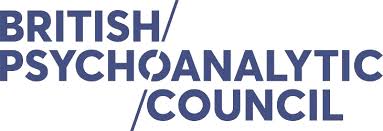Psychoanalytic psychotherapy
Psychoanalytic psychotherapy is a type of therapy that looks at the emotional motivation that underlies our behaviour. We are often unaware of why we behave in a particular way, for example when we repeat a pattern of doing things that is unhelpful to us, yet we find ourselves in the reoccurring behaviour again. Often, people come to psychoanalytic therapy because they feel stuck, anxious, depressed, or find themselves repeating unhealthy relationship patterns without knowing why Psychoanalytic psychotherapy helps us get a deeper understanding of ourselves, why we unconsciously act.
At the birth of psychoanalysis Sigmund Freuds ideas were key, but there was also Carl Jung (Analytic Psychology), and there have been many developments in thinking that have further enriched psychoanalysis and psychoanalytic psychotherapy as a practice. . Psychoanalytic Psychotherapy has been referred to as the talking cure, but in fact nowadays we focus on the non-verbal and bodily aspects of communication as well. The type of Psychoanalytic psychotherapy I do also looks at the circumstances in which a person lives, the opportunities available to them. By seeing the wider context, I can help a person more effectively.
The first rule for change is to understand why, the second is to find out how to bring about change so that negative patterns are broken and the person can develop better ways of managing life. We work, with various methods, to bring the unconscious patterns and motives into consciousness, to link these ways of behaving , with our childhood experiences, the types of relationships that have moulded our being, the fixed perceptions of ourselves that hold us back which we believe but do not serve us well, and by bringing all this to our full awareness , we can find the way to set ourselves free from the past and our emotional misconceptions, enabling a fresher outlook on life
As part of the analytic experience, the therapist will encourage open and honest conversation. The person in therapy is invited to speak freely about whatever comes to mind—thoughts, dreams, memories, or feelings. This process, known as “free association,” allows hidden emotions and unresolved conflicts to surface. The therapist listens carefully, often noticing recurring themes or defences—ways people protect themselves from painful feelings. The goal of this therapy is to bring unconscious patterns into conscious awareness so that people gain insight, resolve inner conflicts, and make lasting changes in their lives.
A key part of psychoanalytic therapy is the relationship between the therapist and the client. This relationship can reflect patterns from the client’s past, such as how they relate to caregivers or authority figures. By exploring these patterns as they show up in the therapy with the therapist, a client can begin to understand how early experiences have left a lasting influence and how patterns develop as a consequence which affect their present life.
This therapy usually takes place over a longer period and often involves meeting once or more per week. It’s not about quick fixes or advice-giving. Instead, it’s a gradual process of self-discovery and emotional growth. Over time, as clients become more aware of their inner world, they can develop healthier ways of thinking, feeling, and relating to others.
Psychoanalytic psychotherapy can help with a wide range of issues, including anxiety, depression, relationship difficulties, low self-esteem, and trauma. It’s especially useful for people who want to understand themselves on a deeper level and are open to exploring their inner lives.
In short, psychoanalytic psychotherapy works by helping people uncover the roots of their emotional struggles, understand how those patterns developed, and create space for new ways of being. It’s a journey of reflection, insight, and change—one that takes time, but can lead to profound and lasting transformation.


